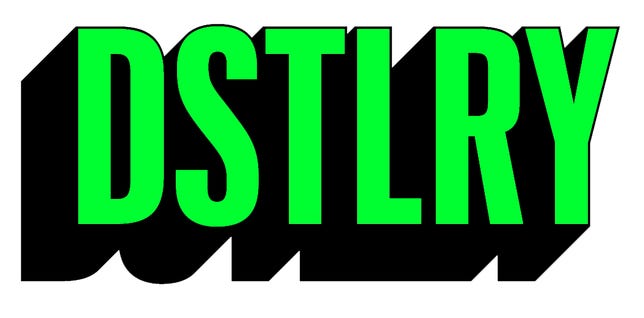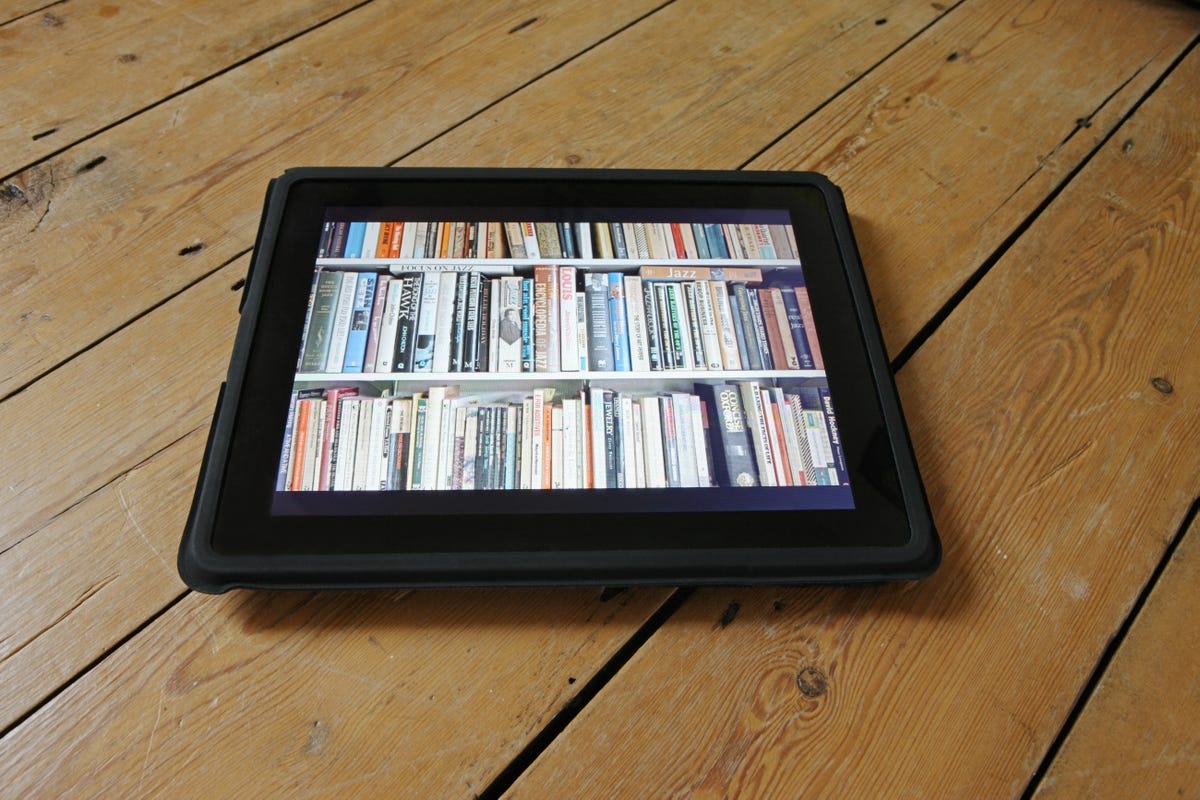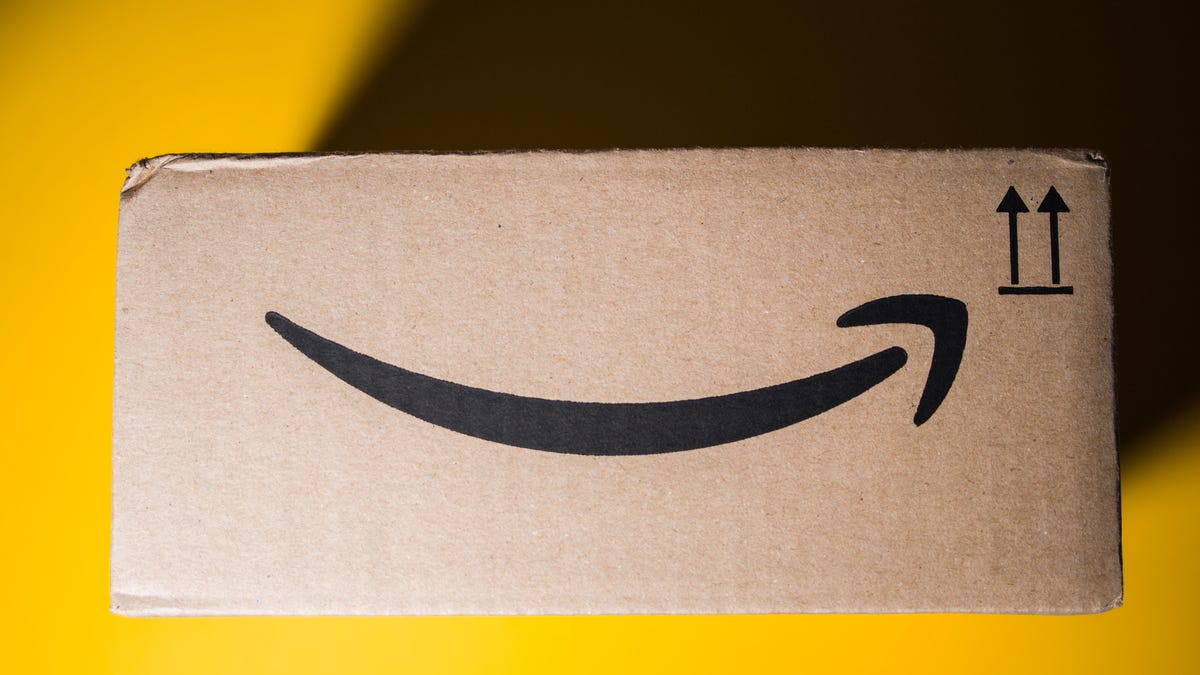Technologies
New Comics Publisher Wants to Help Readers Feel Closer to Creators
Commentary: Why I’m excited about the publisher, called Dstlry, and the impact it could have on the comics industry.

Two former Comixology heads unveiled a new creator-owned comics and collectibles publisher Thursday called Dstlry. David Steinberger, co-founder and former CEO of Comixology, and Chip Mosher, former Comixology head of content, hope the new publisher shifts the industry around creator-owned comics and collectibles.
Dstlry will offer a limited number of physical and digital items for sale online and in brick-and-mortar stores. Owners of digital items will then be able to sell their items in the Dstlry marketplace, and the original creators will get a percentage of what the item sells for.


Dstlry’s logo.
DstlrySteinberger and Mosher told me in an interview they hope Dstlry can help alleviate pains some creators have felt in the comics industry when it comes to compensation. While some comic characters and stories make millions of dollars as a result of films, some creators have felt left out in the cold.
Ed Brubaker and Steve Epting, for example, transformed Bucky Barnes into the Winter Soldier in 2005. However, Brubaker wrote in his newsletter in 2021 that he feels he and Epting haven’t been adequately compensated for their work given the character’s success in multiple Marvel Cinematic Universe films and shows.
«For the most part all Steve Epting and I have gotten for creating the Winter Soldier and his storyline is a ‘thanks’ here or there,» Brubaker wrote. «I’ve even seen higher-ups on the publishing side try to take credit for my work a few times, which was pretty galling.»
Steinberger and Mosher saw these issues and wanted to be part of the solution by making sure creators are treated well so they can produce their best work for readers.
«We looked at all these problems creators had and we tried to fix that,» Mosher said. «We knew if we fix stuff for creators across the board, on a lot of different levels, then we’d be delivering the best thing for the customers.»


Ed Brubaker (pictured) and Steve Epting brought Bucky Barnes back to life as the Winter Soldier in 2005.
Jeff Kravitz/Getty Images«Without [creators] there’s nothing, and they don’t always get treated that way when their material that they create becomes $100 million movies or billion dollar movies,» Steinberger said. Dstlry is about «honoring their contribution … there’s a joy in trying to correct what is currently out there.»
Steinberger and Mosher also said they hope Dstlry will bring the fun of collecting print issues to the digital space. They said when new issues of a comic are released, digital copies of the comic will be sold online at dstlry.co for one week until the next issue comes out.
«However many digital copies get sold between Wednesday and Tuesday, that’s it, never any more again,» Mosher said.
But people will still be able to get their hands on digital issues through the Dstlry marketplace, and mass market digital trade collections will be available more broadly. Physical copies will be available in local comic shops, too. Some creators will also be given complimentary digital copies of comics they can give out to fans.
Steinberger and Mosher said they hope this will help readers feel closer to all the creators that are publishing through Dstlry.
The list of Dstlry founding creators includes well-known writers and artists like Eisner Award winners Scott Snyder, Becky Cloonan and James Tynion IV. Dstlry’s advisory board consists of film producer Lorenzo di Bonaventura, video game industry veteran John Schappert and tech strategist Mike Vorhaus.
You can find the full list of Dstlry’s founding creators at the end of this story.


Eisner Award winner Scott Snyder is one of the founding creators of Dstlry.
Roy Rochlin/Getty Images«Artistic growth is spurred when its creators are nurtured and properly compensated for their achievements,» Bonaventura said in a news release. «This new system and its shared equity model will provide an invigorating environment which will foster great storytelling.»
And understanding how to build that kind of environment is something Steinberger and Mosher said they developed in their tenures at Comixology.
«Learning how to work with creators at a high level and do the best for them, which led to the best products, was one of the big things I learned,» Mosher said, referring to individual issues.
«You want to have empathy for [creators],» Steinberger said. «You want to understand what they need, and try to deliver that every time.»
More details about Dstlry’s plans will be revealed later this year.


Readers will still be able to get Dstlry comics at comic shops if they want physical copies.
Getty ImagesHow Dstlry could affect the comic industry
The type of commodities market Dstlry is launching has a few advantages over other commodities markets.
Namely, other commodities depreciate in value after they’re used. Sneakers, for example, depreciate in value the second you put them on your feet. Cars also depreciate in value by as much as 9% to 11% as soon as you drive one off the lot, according to financial counseling firm Ramsey Solutions.


A copy of Detective Comics No. 27 sold at auction in 2022 for $1.74 million.
Spencer Weiner/Getty ImagesWith Dstlry’s model, people should be able to read a digital comic as many times as they want, then sell that comic on Dstlry’s digital marketplace for the price they bought the comic for, or higher. Looking to physical comics as an example, Detective Comics No. 27, which introduced Batman in 1939, sold at auction in May 2022 for $1.74 million. Granted, that’s an extreme example that most new comics won’t replicate anytime soon. But Dstlry wants to create a system where creators still make money from the sale — and resale — of their comics at any time.
That also means if you get into a digital series a few months after it launches, you’ll likely have to pay a higher price for an early comic in that digital series. You’ll probably have to pay more for a physical copy of that comic, too, since those are also sold in limited quantities, but that’s also often true of traditional publishers.
Admittedly, this could create a predatory resale market. That could happen if people buy as many digital copies of a comic as they can, then once the comic goes out of print, they ask for an absurd amount of money for the digital comics on the Dstlry marketplace. However, this kind of speculation led to a comics industry crash in the ’90s. People who hope to get rich from the resale of these digital comics will have to invest wisely and understand that some of the largest payoffs come after years of waiting.
The resale of digital comics on Dstlry’s marketplace should have a benefit over physical copies of comics, though.
With physical copies of comics you need plastic covers and storage space to help keep comics secure and safe, and you’ll have to be vigilant about how they’re stored if you plan on selling them after a certain amount of time.
Digital copies of comics are limited only by the amount of space on your device. And if Dstlry offers cloud storage, people won’t even have to worry about that.


Maintaining and transporting your digital comics is easier than their physical counterparts.
Getty ImagesBesides those advantages for readers, Dstlry’s benefits for creators seem obvious, and it addresses an issue some people in the sneaker community have pointed out.
Nike made over $46 billion in revenue in 2022. Footwear made up about two-thirds of that revenue, at $29 billion. The sneaker resale market alone was estimated to be worth about $10 billion in 2021, according to Axios. It isn’t known how much estimated value Nike sneakers have on the resale market, but you can see there are huge profits in the resale market that companies like Nike are cut out of.
With Dstlry’s model, each time a digital item is resold, a percentage of that sale goes back to the creators. That means creators will benefit from their work weeks, months or even years after their digital series ends. Though the percentage of an item’s resale value that creators will receive hasn’t been disclosed at this time, any percentage is better than none.
I’m not expecting Dstlry to fix issues in the comics industry overnight, or even by the end of the year. Systemic changes take time and a lot of buy-in from others, like creators and readers.
However, I believe creators should get the full benefit from their work. It’s ridiculous that someone can get rich off something a creator made while that creator gets little or nothing in return.
I’m hopeful for Dstlry, and I plan on supporting the publisher and its creators in the future.
For more on comics, check out the best comic to read if you’re sick of superheroes, Scott Snyder’s creator-owned comic Dark Spaces: Wildfire and a graphic novel that imagines what it would look like if Jan. 6 succeeded.
Here’s the full list of Dstlry’s founding creators:
- Scott Snyder
- Tula Lotay
- James Tynion IV
- Junko Mizuno
- Ram V
- Mirka Andolfo
- Joëlle Jones
- Jock
- Becky Cloonan
- Brian Azzarello
- Elsa Charretier
- Stephanie Phillips
- Lee Garbett
- Marc Bernardin
- Jamie McKelvie
- Will Dennis (founding editor)
Technologies
Were You ‘Tricked’ Into an Amazon Prime Subscription? You Might Be Owed Part of a $2.5B Settlement
Consumers who were «tricked» into a Prime subscription and unable to cancel could see a payout. Here’s who qualifies, and how much you might receive.

Amazon used to make it easy to sign up for a Prime subscription — but very difficult to cancel. From tricky shipping options to Prime Video, plenty of customers wound up with a subscription they didn’t want, and now Amazon is paying the price. In September, the US Federal Trade Commission dropped a massive $2.5 billion settlement on the company for its deceptive subscription tactics.
This isn’t just a slap on the wrist. A whopping $1.5 billion is earmarked to refund eligible subscribers, with the rest serving as a civil penalty. Amazon is now legally required to provide a clear, obvious option to decline Prime, making it as easy to leave the service as it is to join.
Amazon isn’t admitting to any shady behavior. «Amazon and our executives have always followed the law, and this settlement allows us to move forward and focus on innovating for customers,» Mark Blafkin, Amazon senior manager, said in a statement. «We work incredibly hard to make it clear and simple for customers to both sign up or cancel their Prime membership, and to offer substantial value for our many millions of loyal Prime members around the world.»
Don’t miss any of our unbiased tech content and lab-based reviews. Add CNET as a preferred Google source.
Why did the FTC file a lawsuit against Amazon?
The FTC filed suit against Amazon, accusing the company of using «dark patterns» to nudge people into Prime subscriptions and then making it too hard to cancel. The FTC maintained Amazon was in violation of Section 5 of the FTC Act and the Restore Online Shoppers’ Confidence Act.
«Specifically, Amazon used manipulative, coercive or deceptive user-interface designs known as ‘dark patterns’ to trick consumers into enrolling in automatically renewing Prime subscriptions,» the FTC complaint stated.
Who’s eligible for Amazon’s payout?
Amazon’s legal settlement is limited to customers who enrolled in Amazon Prime between June 23, 2019, and June 23, 2025. It’s also restricted to customers who subscribed to Prime using a «challenged enrollment flow» or who enrolled in Prime through any method but were unsuccessful in canceling their memberships.
The FTC called out specific enrollment pages, including Prime Video enrollment, the Universal Prime Decision page, the Shipping Option Select page and the Single Page Checkout. To qualify for a payout, claimants must also not have used more than 10 Amazon Prime benefits in any 12-month period.
Customers who signed up via those challenged processes and did not use more than three Prime benefits within one year will be paid automatically by Amazon within 90 days. Other eligible Amazon customers will need to file a claim, after Dec. 23, and Amazon is required to send notices to those people within 30 days of making its automatic payments.
Customers who did not use a challenged sign-up process but instead were unable to cancel their memberships will also need to file claims for payment.
How big will the Amazon payments be?
Payouts to eligible Amazon claimants will be limited to a maximum of $51. That amount could be reduced depending on the number of Amazon Prime benefits you used while subscribed to the service. Those benefits include free two-day shipping, watching shows or movies on Prime Video or Whole Foods grocery discounts.
Customers who qualify for the payments should receive them by Dec. 24.Customers outside the US aren’t eligible for the payout.
Technologies
Today’s Wordle Hints, Answer and Help for Nov. 27, #1622
Here are hints and the answer for today’s Wordle for Nov. 27, No. 1,622.

Looking for the most recent Wordle answer? Click here for today’s Wordle hints, as well as our daily answers and hints for The New York Times Mini Crossword, Connections, Connections: Sports Edition and Strands puzzles.
Today’s Wordle puzzle is a little tricky. If you need a new starter word, check out our list of which letters show up the most in English words. If you need hints and the answer, read on.
Today’s Wordle hints
Before we show you today’s Wordle answer, we’ll give you some hints. If you don’t want a spoiler, look away now.
Wordle hint No. 1: Repeats
Today’s Wordle answer has no repeated letters.
Wordle hint No. 2: Vowels
Today’s Wordle answer has two vowels.
Wordle hint No. 3: First letter
Today’s Wordle answer begins with R.
Wordle hint No. 4: Last letter
Today’s Wordle answer ends with T.
Wordle hint No. 5: Meaning
Today’s Wordle answer can refer to sending money to pay for something.
TODAY’S WORDLE ANSWER
Today’s Wordle answer is REMIT.
Yesterday’s Wordle answer
Yesterday’s Wordle answer, Nov. 26, No. 1621 was HOVEL.
Recent Wordle answers
Nov. 22, No. 1617: THICK
Nov. 23, No. 1618: BUNNY
Nov. 24, No. 1619: DOUGH
Nov. 25, No. 1620: PLEAD
Technologies
Today’s NYT Connections Hints, Answers and Help for Nov. 27, #900
Here are some hints and the answers for the NYT Connections puzzle for Nov. 27, #900

Looking for the most recent Connections answers? Click here for today’s Connections hints, as well as our daily answers and hints for The New York Times Mini Crossword, Wordle, Connections: Sports Edition and Strands puzzles.
Today’s NYT Connections puzzle is kind of tough. The purple category relies on you to know the other games in the New York Times stable. (We feature answers to five of those games.) If you need help sorting them into groups, you’re in the right place. Read on for clues and today’s Connections answers.
The Times now has a Connections Bot, like the one for Wordle. Go there after you play to receive a numeric score and to have the program analyze your answers. Players who are registered with the Times Games section can now nerd out by following their progress, including the number of puzzles completed, win rate, number of times they nabbed a perfect score and their win streak.
Read more: Hints, Tips and Strategies to Help You Win at NYT Connections Every Time
Hints for today’s Connections groups
Here are four hints for the groupings in today’s Connections puzzle, ranked from the easiest yellow group to the tough (and sometimes bizarre) purple group.
Yellow group hint: Look out!
Green group hint: Store things here.
Blue group hint: In the shop.
Purple group hint: Some meta rhyming.
Answers for today’s Connections groups
Yellow group: Inundation.
Green group: Main folders in a computer.
Blue group: Woodworking tools.
Purple group: Rhymes for New York Times games.
Read more: Wordle Cheat Sheet: Here Are the Most Popular Letters Used in English Words
What are today’s Connections answers?
The yellow words in today’s Connections
The theme is inundation. The four answers are avalanche, outpouring, tidal wave and torrent.
The green words in today’s Connections
The theme is main folders in a computer. The four answers are desktop, documents, downloads and music.
The blue words in today’s Connections
The theme is woodworking tools. The four answers are drills, files, routers and saws.
The purple words in today’s Connections
The theme is rhymes for New York Times games. The four answers are confections (Connections), grands (Strands), hurdle (Wordle) and swelling sea (Spelling Bee).
Don’t miss any of our unbiased tech content and lab-based reviews. Add CNET as a preferred Google source.
-

 Technologies3 года ago
Technologies3 года agoTech Companies Need to Be Held Accountable for Security, Experts Say
-

 Technologies3 года ago
Technologies3 года agoBest Handheld Game Console in 2023
-

 Technologies3 года ago
Technologies3 года agoTighten Up Your VR Game With the Best Head Straps for Quest 2
-

 Technologies4 года ago
Technologies4 года agoBlack Friday 2021: The best deals on TVs, headphones, kitchenware, and more
-

 Technologies4 года ago
Technologies4 года agoVerum, Wickr and Threema: next generation secured messengers
-

 Technologies4 года ago
Technologies4 года agoGoogle to require vaccinations as Silicon Valley rethinks return-to-office policies
-

 Technologies4 года ago
Technologies4 года agoOlivia Harlan Dekker for Verum Messenger
-

 Technologies4 года ago
Technologies4 года agoiPhone 13 event: How to watch Apple’s big announcement tomorrow
